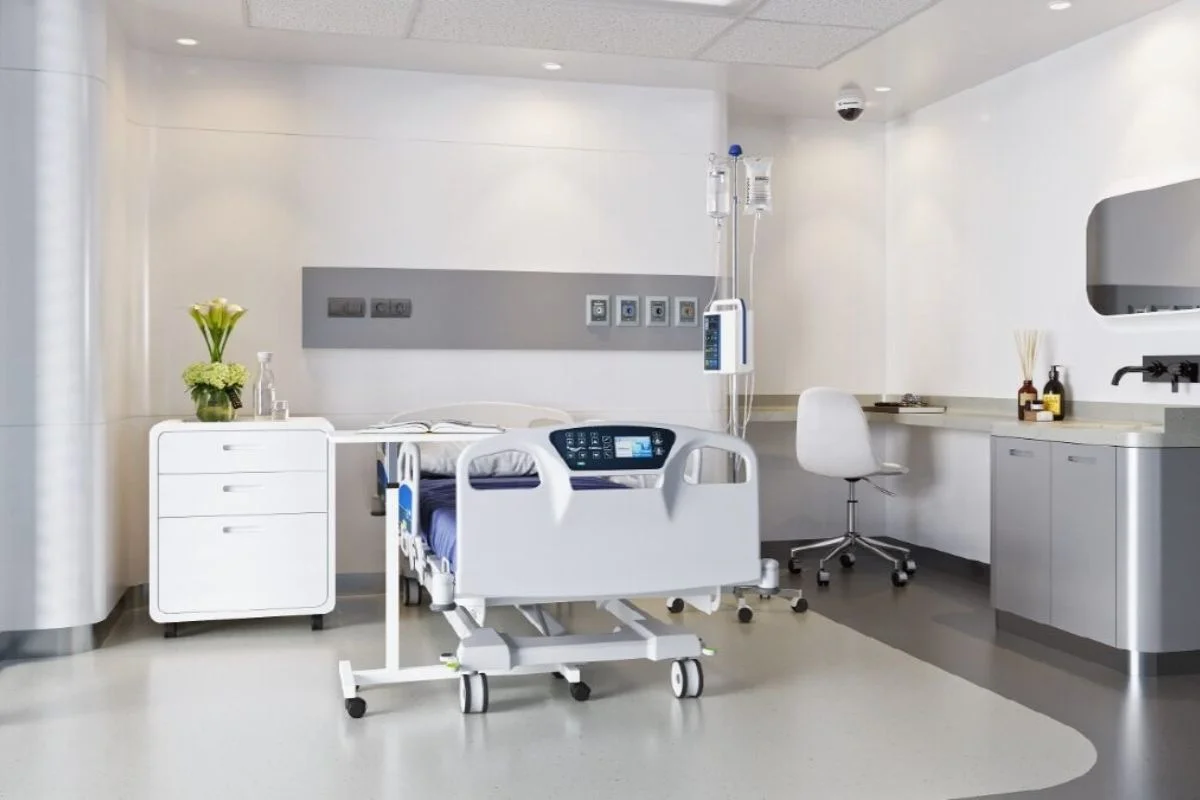Hospital flooring plays a crucial role in shaping the environment of healthcare facilities, influencing both the experiences of patients and the safety of medical staff. Beyond mere aesthetics, the choice of flooring material in hospitals carries significant implications for infection control, comfort, and overall well-being. In recent years, there has been a growing recognition of the importance of selecting appropriate carpets for healthcare settings, with a focus on enhancing patient experience and ensuring optimal safety standards.
In this exploration, we delve into the multifaceted importance of hospital flooring, examining how it contributes to creating healing environments, improving patient satisfaction, and mitigating risks associated with healthcare-associated infections (HAIs). From the selection of materials to the implementation of maintenance protocols, every aspect of hospital carpeting is meticulously designed to meet the unique needs of healthcare facilities while prioritizing the health and safety of patients and staff alike.
Brief overview of the importance of hospital flooring in healthcare design
Hospital flooring plays a pivotal role in healthcare design, extending far beyond its utilitarian function. As a foundational element of the healthcare environment, flooring significantly impacts the overall atmosphere and experience within medical facilities. The importance of hospital flooring lies in its ability to contribute to the creation of healing spaces that prioritise patient well-being, safety, and operational efficiency.
From a patient’s perspective, the flooring sets the tone for their healthcare journey. Comfortable and aesthetically pleasing flooring can help alleviate stress and anxiety, contributing to a more positive overall experience. Moreover, the choice of flooring materials directly influences safety measures and infection control, crucial considerations in a healthcare setting where the well-being of patients and staff is paramount.
In terms of design, hospital flooring is no longer merely a functional necessity but a key component in creating a welcoming and therapeutic environment. Modern healthcare design trends emphasise the integration of innovative materials, colours, and patterns to foster a sense of calm and optimism. By carefully selecting flooring options that align with the goals of patient-centred care, healthcare facilities can enhance the overall quality of the healing environment.
In essence, the importance of hospital flooring in healthcare design lies in its power to shape spaces that go beyond clinical functionality. It contributes to the holistic well-being of patients, aids in infection control, and reflects the commitment of healthcare facilities to providing compassionate and supportive environments for healing.
Uses of Hospital Flooring
Hospital flooring serves a multitude of critical functions within healthcare facilities, playing a pivotal role in creating safe, hygienic, and functional environments. The uses of hospital flooring extend beyond mere aesthetics, encompassing various essential aspects that contribute to the well-being of patients, staff, and the overall efficiency of healthcare operations. Here are some key uses of hospital flooring:
Infection Control: Hospital flooring is a frontline defence against the spread of infections. Choosing materials that are easy to clean and maintain helps create a hygienic environment, preventing the accumulation of pathogens and ensuring that healthcare facilities meet rigorous cleanliness standards.
Safety: The flooring in hospitals must prioritise safety to prevent slips, trips, and falls. Slip-resistant materials are crucial, especially in areas prone to spills or where patients and staff may be in contact with fluids. This helps mitigate the risk of accidents and injuries.
Durability: High-traffic areas in hospitals demand durable flooring that can withstand constant use and the movement of heavy equipment, such as gurneys and wheelchairs. Durable flooring reduces the need for frequent replacements, minimising disruptions to healthcare operations.
Patient Comfort: Creating a comfortable and calming environment is vital for patient well-being. Hospital flooring with shock-absorbing qualities can enhance comfort, particularly in areas where patients may be spending extended periods, such as recovery rooms or patient rooms.
Specialised Areas: Different areas within a hospital have distinct requirements. Surgical rooms may need anti-static flooring to prevent interference with electronic equipment, while imaging areas may require materials that accommodate heavy machinery. Tailoring flooring to specific needs enhances the efficiency of specialised spaces.
Wayfinding and Design: Flooring can be used as a design element to aid wayfinding for patients, visitors, and staff. Colour-coded or patterned flooring helps delineate different areas within the hospital, making navigation more intuitive.
Noise Reduction: Hospitals can be noisy environments, and flooring choices can contribute to sound control. Selecting materials with noise-absorbing properties helps create a quieter and more healing atmosphere for patients and a more focused workspace for healthcare professionals.
Ease of Maintenance: Hospital flooring should be easy to clean and maintain to meet strict hygiene standards. Choosing low-maintenance materials reduces the burden on hospital staff and ensures that cleanliness is consistently upheld.
Advantages and Disadvantages of Hospital Flooring
Advantages of Hospital Flooring:
Infection Control: Hospital flooring materials designed for easy cleaning and maintenance contribute to effective infection control, minimising the risk of pathogen transmission.
Safety: Slip-resistant flooring options enhance safety by reducing the likelihood of accidents, such as slips and falls, in high-traffic areas and spaces prone to spills.
Durability: Hospital flooring is often engineered to withstand heavy foot traffic, equipment movement, and frequent cleaning, ensuring long-lasting performance and reducing the need for frequent replacements.
Patient Comfort: Certain flooring materials with shock-absorbing properties contribute to the comfort of patients, particularly in areas where they spend extended periods, such as patient rooms or waiting areas.
Specialized Applications: Hospital flooring can be tailored to meet the specific requirements of different areas, such as surgical suites, imaging rooms, or laboratories, enhancing functionality in specialised spaces.
Aesthetics and Wayfinding: Thoughtfully designed hospital flooring can contribute to a visually appealing environment and aid wayfinding through colour-coded or patterned designs, making navigation within the facility more intuitive.
Noise Reduction: Flooring materials with noise-absorbing qualities help create a quieter and more conducive environment for patients, staff, and visitors.
Ease of Maintenance: Many hospital flooring options are chosen for their ease of maintenance, reducing the workload on hospital staff and ensuring a consistently clean and hygienic environment.
Disadvantages of Hospital Flooring:
Cost: High-quality hospital flooring materials that meet stringent safety and hygiene standards can be expensive, potentially posing a budgetary challenge for healthcare facilities.
Installation Complexity: Installing specialised hospital flooring may require skilled professionals, and the process can be complex and time-consuming, leading to disruptions in hospital operations.
Limited Aesthetic Choices: Some hospital flooring options prioritise functionality over aesthetics, limiting the range of design choices available for creating visually appealing spaces.
Chemical Sensitivity: Certain flooring materials may emit volatile organic compounds (VOCs) or other chemicals, which could be a concern for individuals with sensitivities or allergies.
Temperature Sensitivity: Some flooring materials may be sensitive to temperature changes, potentially causing issues in environments with varying climate conditions.
Maintaining Sterility: While hospital flooring is designed for cleanliness, maintaining complete sterility, especially in high-risk areas such as operating rooms, can be challenging.
Wear and Tear: Despite durability, high-traffic areas may still experience wear and tear over time, necessitating periodic maintenance or replacement.
Technological Integration: Integrating technology into flooring materials for applications such as data transmission or power supply may pose challenges and require additional planning and resources.
Maintenance Tips of Hospital Flooring
Maintaining hospital flooring is crucial for ensuring a clean, safe, and hygienic environment within healthcare facilities. Proper maintenance not only extends the lifespan of flooring materials but also contributes to infection control and the overall well-being of patients and staff. Here are essential maintenance tips for hospital flooring:
Regular Cleaning Schedule:
- Establish a routine cleaning schedule to address high-traffic areas and spaces prone to spills or contamination.
- Use hospital-grade cleaning agents recommended by flooring manufacturers to ensure efficacy without compromising material integrity.
Immediate Spill Cleanup:
- Promptly address spills, leaks, or accidents to prevent staining and reduce the risk of slips and falls.
- Utilise absorbent materials and appropriate cleaning solutions for different types of spills.
Avoid Harsh Chemicals:
- Choose cleaning agents that are compatible with the specific flooring material to avoid damage.
- Avoid using harsh chemicals that may degrade or discolour the flooring over time.
Regular Inspections:
- Conduct regular inspections to identify and address any signs of wear, damage, or potential hazards.
- Pay special attention to seams, edges, and transitions between different flooring materials.
Use of Entrance Mats:
- Place entrance mats at all entry points to trap dirt and debris, preventing them from being tracked into the healthcare facility.
- Clean and replace entrance mats regularly to maintain their effectiveness.
Appropriate Cleaning Equipment:
- Use cleaning equipment, such as microfiber mops and soft-bristle brushes, that are gentle on flooring surfaces.
- Avoid abrasive tools or materials that could scratch or damage the flooring.
Floor Waxing and Sealing:
- Apply wax or sealant as recommended by the flooring manufacturer to protect against wear and tear.
- Follow a regular schedule for floor waxing or sealing based on the specific needs of the flooring material.
Addressing Stains Promptly:
- Quickly address any stains to prevent permanent discoloration or damage.
- Use appropriate stain-removal techniques based on the type of flooring and the nature of the stain.
Strategic Furniture Placement:
- Use furniture pads or casters to prevent scratches and indentations on the flooring.
- Periodically rearrange furniture to distribute weight evenly and minimise wear in specific areas.
Educating Staff:
- Train cleaning and maintenance staff on proper procedures and the use of recommended cleaning products.
- Encourage all staff members to report any maintenance issues promptly.
Conclusion
In conclusion, the maintenance of hospital flooring is a critical aspect of ensuring the overall cleanliness, safety, and functionality of healthcare environments. The significance of a well-maintained floor extends beyond aesthetic considerations, directly impacting infection control, patient well-being, and operational efficiency within healthcare facilities.





